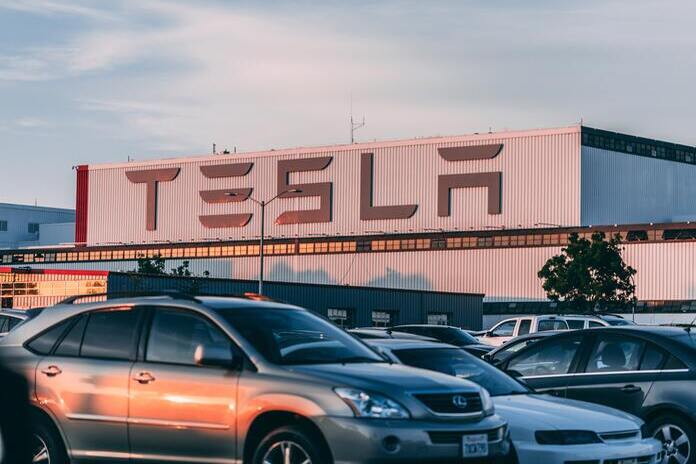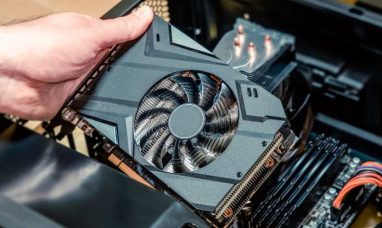Tesla Stock (NASDAQ:TSLA)
On March 1, Tesla (NASDAQ:TSLA) held an investor day. The corporation and its CEO had earlier talked a lot (and created some buzz) about the publication of the so-called Master Plan 3, but based on the presentation, Master Plan 3 appears to be a flop. There are no new vehicles, no significant updates to its autonomous vehicle technology, and so on. Unsurprisingly, Tesla stock reacted poorly to the lackluster presentation.
What Occurred?
Prior to the event, Tesla CEO Elon Musk stated that it would “redefine things,” that Tesla will “set out the company’s vision for a totally sustainable future,” and that the event would be about Tesla’s ramping up operations plan. As a result, many investors and experts expected Tesla to unveil a new model (Model 2) priced lower than Tesla’s current cheapest vehicle, the Model 3. The development of such a low-cost vehicle would have increased Tesla’s chances of eventually becoming a mass-market manufacturer. Of course, extending market potential is critical for a firm that intends to sell more vehicles than any other automobile company in the future. For example, the market for vehicles costing $50,000 or more is quite limited.
Master Plan 3 Appears to Be a Failure
However, Tesla did not reveal any new models, neither the Model 2 nor any other new vehicle. Instead, the corporation displayed some additional items, none of which appear to be particularly significant.
Tesla has stated that it intends to construct the next generation of its automobiles for significantly less money per vehicle. The cost savings appear to be in the 50% range, although Tesla did not elaborate on how this will be accomplished. It should also be noted that Tesla has a history of failing to deliver on cost commitments; the Model 3, for example, is more expensive than the firm had predicted prior to its release. It’s also widely recognized that the Cybertruck will not be sold for less than $40,000 (which was what Tesla had guided for) when it eventually will be launched. The claim of being 50% cheaper also appears doubtful when we consider that input costs, such as lithium, have been growing as more and more companies enter the EV industry. Steel, on the other hand, has recently become more expensive. I suspect that input costs will decline dramatically, and while Tesla will undoubtedly discover methods to become more efficient over time, a 50% drop in production costs will be difficult to achieve.
When it comes to the Cybertruck, Tesla has announced that production will begin later this year. While this is several years behind the original plan, it would still be a win for Tesla if it could finally break into the electric truck market. Rivals such as Ford and Rivian have now been involved in this industry for a time and have established themselves as viable electric truck manufacturers, which will be a new position for Tesla, as its products were previously market leaders. Success with the Cybertruck is thus not guaranteed, but when it hits the market this year, the company will have taken the first step toward creating a market presence.
Tesla also discussed its upcoming Gigafactory in Mexico, near the industrial town of Monterrey. For some time, there had been speculations regarding a new Gigafactory in Northern Mexico, which have recently been proven. And it makes sense to develop a plant there because labor costs are far lower than in the US, for example, and the plant will be close to the vital US market. Many other vehicle firms, including Audi, BMW, Ford, GM, Toyota, and others, have operations in Mexico. As a result, skilled and experienced labor is accessible, as our suppliers. Last but not least, supply chains in Mexico are likely to be less sensitive to interruption than supply chains halfway over the world, such as in China. From a strategic standpoint, the plant in Mexico makes a lot of sense, however, it’s difficult to see how this will give Tesla a competitive advantage, given that most of its competitors have plants in the nation as well.
Tesla also discussed its robot, which is making technological advancements. Nevertheless, when it came to specifics such as pricing, market access, market potential, and so on, the presentation fell short. To me, it does not look like the robot business will be a substantial source of income or profits in the foreseeable future. Opponents believe that the robot business is a distraction for Tesla and that the company should focus on its core auto and energy businesses rather than wasting resources on a robot. Based on everything we’ve seen and heard so far about the robot, I tend to agree with those who don’t see any immediate benefit in this enterprise.
What Is Lacking?
According to Seeking Alpha, the new master plan “includes repowering the existing system with renewables and consumers and companies switching to all-electric vehicles.” This, however, is not a novel concept. Indeed, many corporations, governments, and organizations around the world have discussed the need to increase renewable energy production, and several automotive manufacturers have stated that they will offer EVs largely, if not solely, in the future. As a result, Tesla hasn’t really come up with a novel or original strategy here; instead, they’re expressing what practically everyone else is saying. That, I believe, is a tad underwhelming for a supposedly high-tech pioneer like Tesla. And it appears that the market agrees, as Tesla is down 8% at the time of writing – clearly, the firm did not deliver on what the market and investment community expected.
It appears to me that the market is missing particular details concerning near-term growth drivers. There was no Model 2 announcement, no significant news about the new Roadster, no significant news about robotaxis and FSD, no significant news about solar tiles and other energy business items, and so on. While Tesla has widely discussed the need for renewable energy and EVs, the company has failed to persuade the market and its investors that it would be the driving force behind both trends in the future. In reality, BYD appears to be better positioned to bring EVs to the public because it offers lower entry-level models than Tesla and, unsurprisingly, has considerably faster growth in terms of deliveries than Tesla because it addresses a much broader market. BYD will assist the broader industry in extending the EV market as a battery supplier to other EV manufacturers, including Tesla. Tesla, on the other hand, does not appear to be seeing a spectacular increase in deliveries in the near term, and it is also growing at a slower rate than the market in 2022.
While many people agree with Tesla’s vision of a renewable-powered society in which most people drive EVs, it does not appear that Tesla will be the most powerful force in powering that future in the near term. Its slow growth and continued focus on higher-priced vehicles keep it from becoming the Toyota or Volkswagen of the EV world. BYD, on the other hand, has a higher chance of obtaining that rank. Similarly, while Tesla’s energy business is expanding, I see no reason to expect that growth will accelerate in the short term. Several firms provide solar panels and battery storage solutions, and Tesla hasn’t convinced investors that it will be the determining factor in the global renewable energy revolution.
Takeaway
Previous master plans included the launch of new models, lofty ambitions for self-driving technology (which have yet to be met), and so on. Master Plan 3 contained numerous broad remarks about the need for more EVs on the road, but Tesla failed to enthuse the market or its investors. There was no Model 2 announcement, and while the Gigafactory in Mexico makes sense, it is not a compelling reason to invest in Tesla; many other companies have facilities in Mexico as well. The market reacted negatively to the event, but Tesla stock is still up significantly from its lows, which is why it does not appear to be a wonderful deal right now, at least to me.
Featured Image: Pexels @ Craig Adderley

















